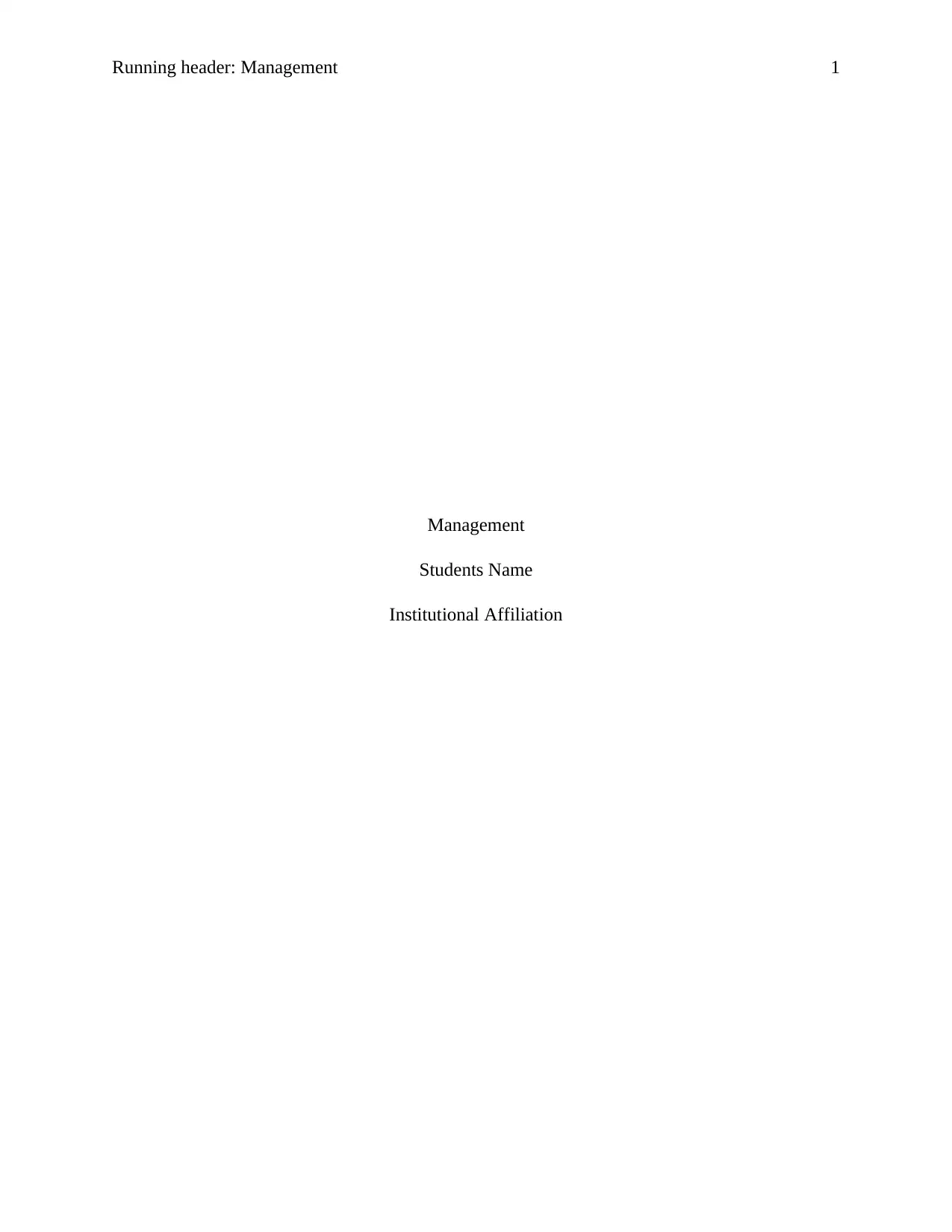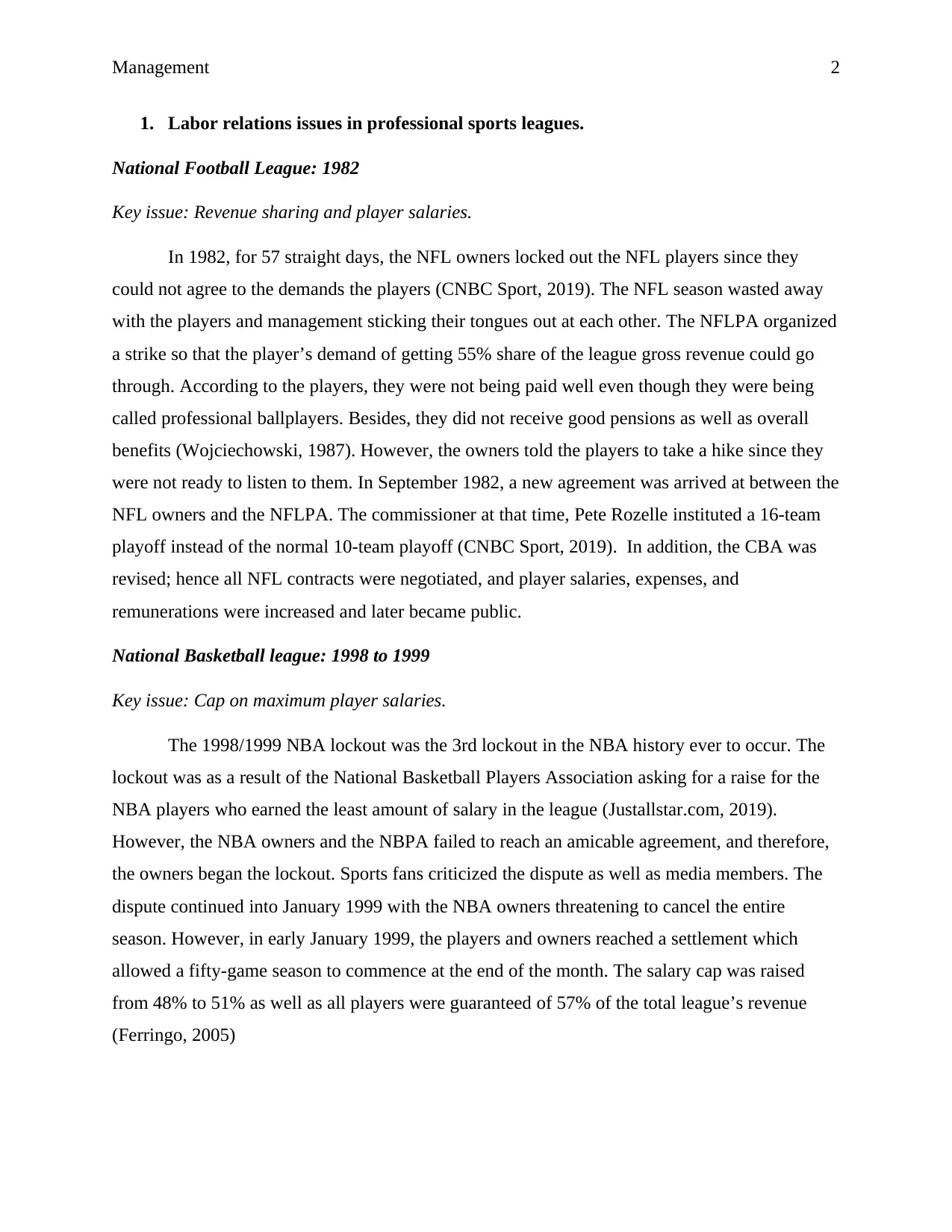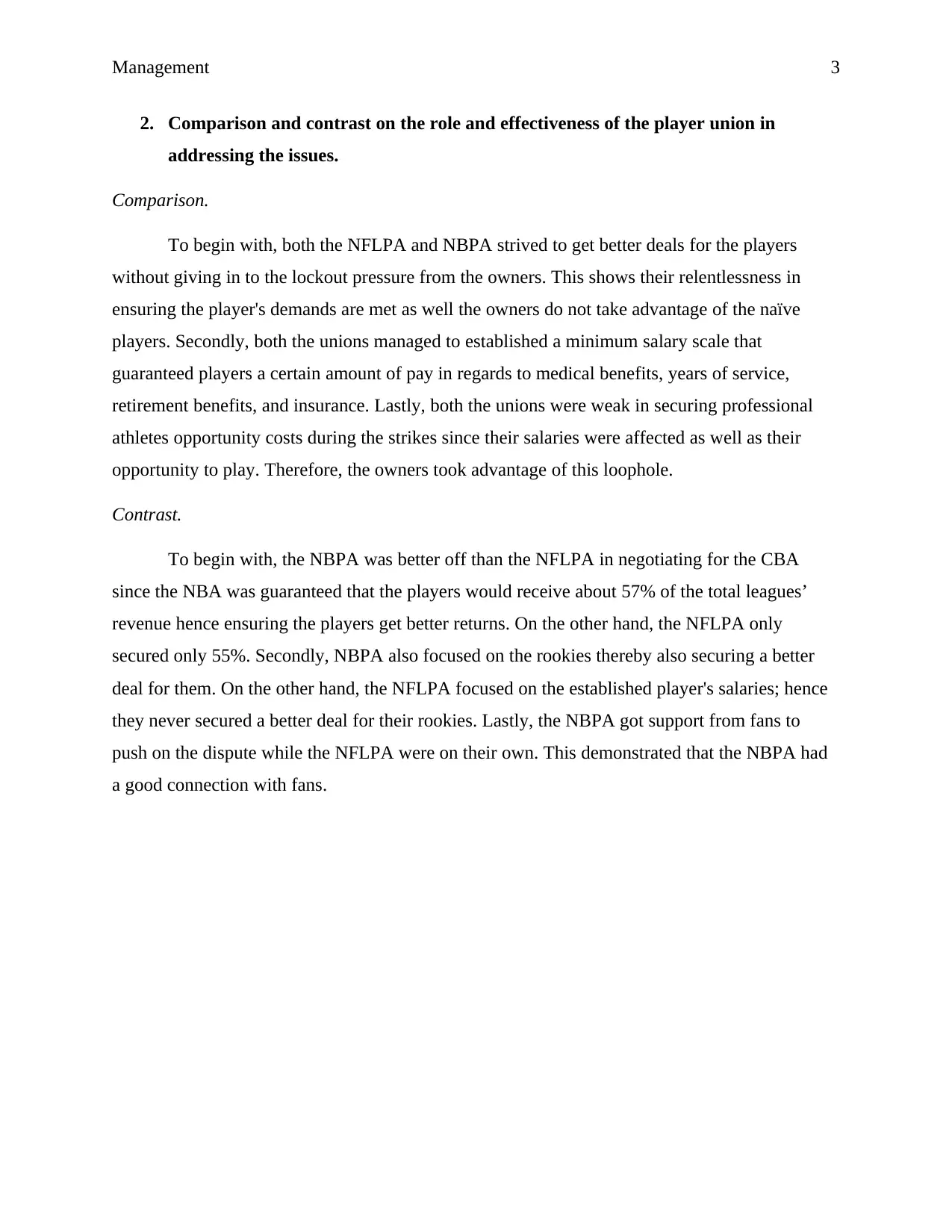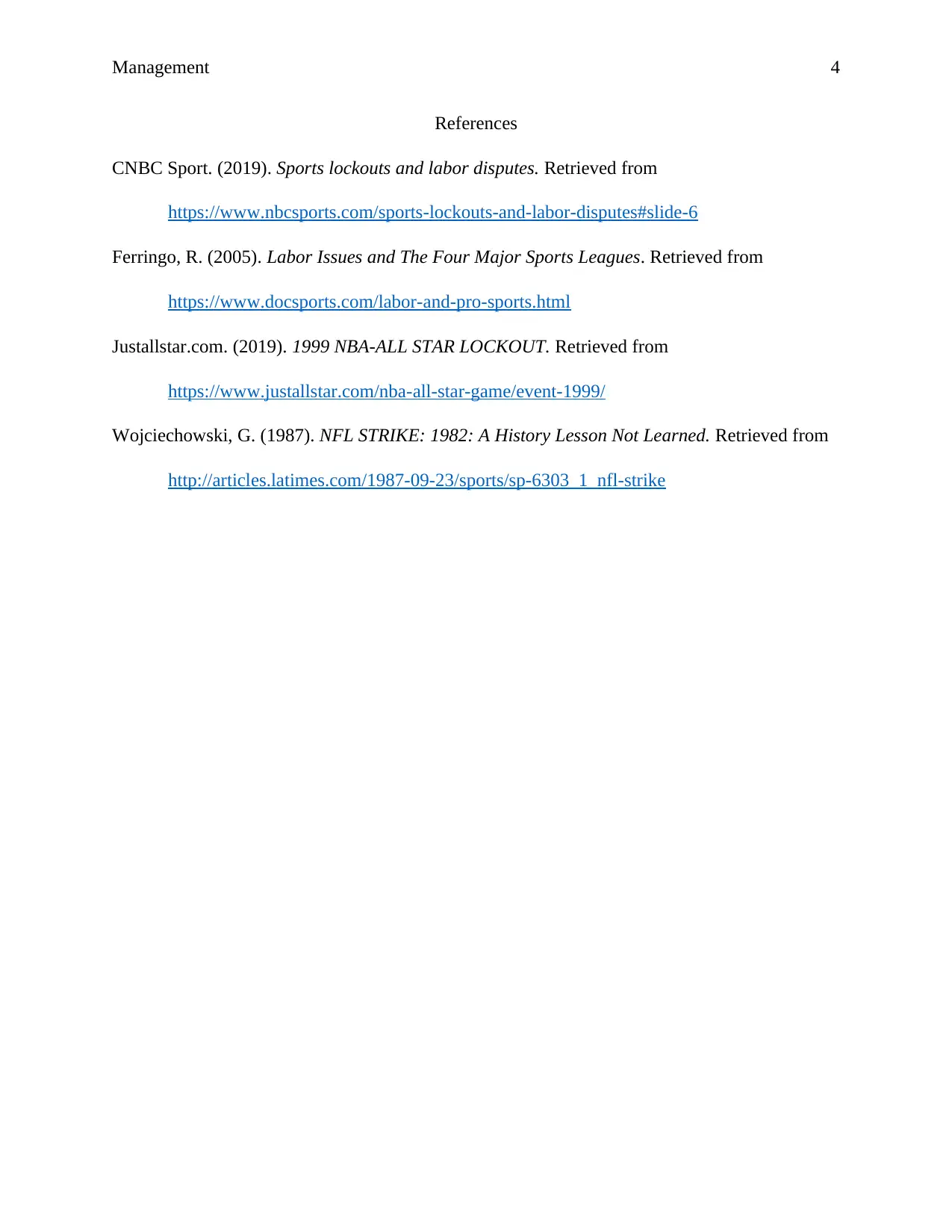Management Analysis: Labor Relations & Disputes in Sports Leagues
VerifiedAdded on 2023/04/21
|4
|796
|244
Essay
AI Summary
This essay provides an analysis of labor relations issues in professional sports leagues, specifically focusing on the National Football League (NFL) and the National Basketball Association (NBA). It highlights key issues such as revenue sharing, player salaries, and salary caps that led to significant labor disputes, including lockouts and strikes. The essay compares and contrasts the role and effectiveness of player unions like the NFLPA and NBPA in addressing these issues, noting their successes in establishing minimum salary scales and securing better deals for players, as well as their weaknesses in mitigating opportunity costs during strikes. The analysis also points out differences in negotiating collective bargaining agreements, securing revenue percentages, and garnering fan support between the two unions.
1 out of 4





![[object Object]](/_next/static/media/star-bottom.7253800d.svg)